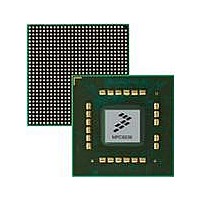MPC8536DS Freescale Semiconductor, MPC8536DS Datasheet - Page 904

MPC8536DS
Manufacturer Part Number
MPC8536DS
Description
BOARD DEV SYSTEM MPC8536E
Manufacturer
Freescale Semiconductor
Series
PowerQUICC III™r
Type
MPUr
Datasheets
1.MPC8536EBVTAVLA.pdf
(127 pages)
2.MPC8536EBVTAVLA.pdf
(1706 pages)
3.MPC8536DS.pdf
(2 pages)
4.MPC8536DS.pdf
(126 pages)
Specifications of MPC8536DS
Contents
Board, Software and Documentation
Processor Series
MPC85xx
Core
e500
Data Bus Width
32 bit
Maximum Clock Frequency
667 MHz
Operating Supply Voltage
- 0.3 V to + 1.21 V
Maximum Operating Temperature
+ 105 C
Data Ram Size
32 KB
Interface Type
SPI, USB
Program Memory Type
DDR2, DDR3, SDRAM
Core Size
32 Bit
Program Memory Size
544KB
Cpu Speed
1.5GHz
Digital Ic Case Style
BGA
No. Of Pins
783
Supply Voltage Range
0.95V To 1.05V
Rohs Compliant
Yes
For Use With/related Products
MPC8536
Lead Free Status / RoHS Status
Lead free / RoHS Compliant
- MPC8536EBVTAVLA PDF datasheet
- MPC8536EBVTAVLA PDF datasheet #2
- MPC8536DS PDF datasheet #3
- MPC8536DS PDF datasheet #4
- Current page: 904 of 1706
- Download datasheet (15Mb)
Enhanced Three-Speed Ethernet Controllers
Table 14-146
14.6.1.8
SGMII communication using the eTSEC is accomplished through the SerDes interface. See
page 14-7
14.6.2
This section describes how to connect an eTSEC to third-party communication devices, including users’
ASICs and FPGAs, through the FIFO interface.
Each eTSEC provides an 8-bit full-duplex packet FIFO interface port that bypasses the Ethernet MAC, but
re-uses the GMII signals. As a result, the FIFO interface normally does not impose the overheads of
Ethernet framing. The FIFO interface operates synchronously, at a maximum frequency defined by a ratio
of 4.2:1 (platform:TxClk) in GMII mode and 3.2:1 (platform:TxClk) in encoded mode providing OC-48
full-duplex transfer rates. For example, a FIFO frequency of 127 MHz in GMII mode requires a platform
frequency of 533 MHz; a FIFO frequency of 200 MHz in encoded mode requires a platform frequency of
667 MHz; a FIFO frequency of 167 MHz in encoded mode requires a platform frequency of 533 MHz.
The eTSEC Tx and Rx FIFOs, TOE functions, and DMA continue to be used in packet FIFO mode.
The ECNTRL[FIFM] bit determines whether eTSEC is communicating with its Ethernet MAC or FIFO
interface.
The following restrictions apply in any of the FIFO modes:
14-156
Bare IP packets—with an optional 32-bit CRC check sequence—can be transferred to the eTSEC directly.
•
•
8-bit packet FIFO
— The GMII signals of each eTSEC can be used to create a FIFO port, therefore eTSEC can
— The data signals of GMII and 8-bit FIFO remain the same. The data valid (RX_DV, TX_EN)
Transferred packets must be no more than 9600 bytes in length.
for specific signal assignments.
support up to two simultaneous 8-bit FIFO interfaces Choosing between 8-bit FIFO and
Ethernet affects each eTSEC independently, therefore a mix of FIFO and Ethernet interfaces
can be configured.
and error (RX_ER, TX_ER) signals are used to signal framing information. If required, the
collision (COL) and carrier sense (CRS) signals can be used in an encoded mode to provide
link-level flow control.
Connecting to FIFO Interfaces
SGMII Interface
describes the signals shared by all interfaces.
MPC8536E PowerQUICC III Integrated Processor Reference Manual, Rev. 1
GTX_CLK125
Signals
MDIO
MDC
Sum
Table 14-146. Shared Signals
I/O
I/O
O
I
No. of Signals
1
1
1
3
Management interface clock
Management interface I/O
Reference clock
Function
—
Freescale Semiconductor
Table 14-1 on
Related parts for MPC8536DS
Image
Part Number
Description
Manufacturer
Datasheet
Request
R
Part Number:
Description:
Manufacturer:
Freescale Semiconductor, Inc
Datasheet:
Part Number:
Description:
Manufacturer:
Freescale Semiconductor, Inc
Datasheet:
Part Number:
Description:
Manufacturer:
Freescale Semiconductor, Inc
Datasheet:
Part Number:
Description:
Manufacturer:
Freescale Semiconductor, Inc
Datasheet:
Part Number:
Description:
Manufacturer:
Freescale Semiconductor, Inc
Datasheet:
Part Number:
Description:
Manufacturer:
Freescale Semiconductor, Inc
Datasheet:
Part Number:
Description:
Manufacturer:
Freescale Semiconductor, Inc
Datasheet:
Part Number:
Description:
Manufacturer:
Freescale Semiconductor, Inc
Datasheet:
Part Number:
Description:
Manufacturer:
Freescale Semiconductor, Inc
Datasheet:
Part Number:
Description:
Manufacturer:
Freescale Semiconductor, Inc
Datasheet:
Part Number:
Description:
Manufacturer:
Freescale Semiconductor, Inc
Datasheet:
Part Number:
Description:
Manufacturer:
Freescale Semiconductor, Inc
Datasheet:
Part Number:
Description:
Manufacturer:
Freescale Semiconductor, Inc
Datasheet:
Part Number:
Description:
Manufacturer:
Freescale Semiconductor, Inc
Datasheet:
Part Number:
Description:
Manufacturer:
Freescale Semiconductor, Inc
Datasheet:










